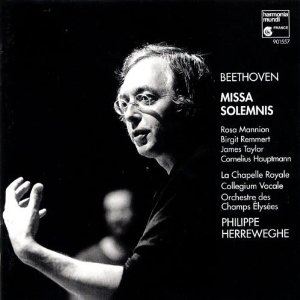Stereophile has again posted a link to J. Gordon Holt’s comprehensive audio glossary containing over 300 terms used by audio reviewers (and audiophiles) to...
Read More »
Recent Articles
Sounds Like? An Audio Glossary
Wilson Audio – A Culture of Craftsmanship
I recently had the pleasure of spending the day at the 50,000 square foot Wilson Audio facility in Provo, Utah, about an hour south...
Read More »
Recent Shows
T.H.E. Show (Newport Beach) 2013 Coverage
I know this isn’t going to win me any popularity contests, but it needs to be said. T.H.E. Show was a disappointment this year....
Read More »
CES 2013 Coverage
Both CES and T.H.E. Show were considerably smaller this year. There were one or perhaps two fewer floors at the Venetian, and by my...
Read More »
Recent Reviews
Pass Labs INT-30A and INT-150 Integrated Amplifier Review
When choosing an amplifier, to paraphrase Hamlet, to Class A or to Class A/B, that is the question. There are ardent supporters of Class...
Read More »
Zesto Andros PS1 Phono Stage Review
I first laid eyes on the Zesto Audio Andros PS1 phono stage ($4300) at RMAF 2011, where it was introduced in several rooms with...
Read More »
Pass Labs INT-30A and INT-150 Integrated Amplifier Review
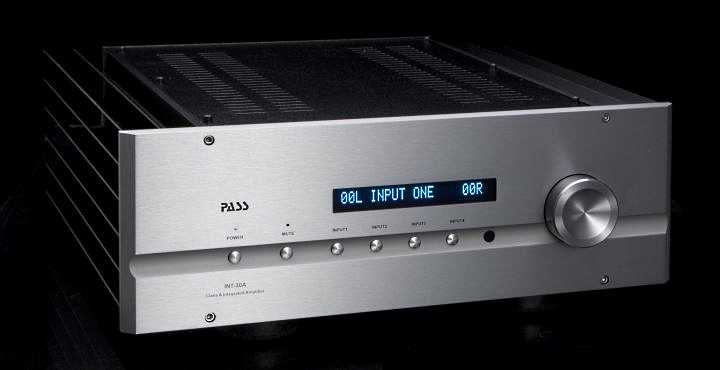
When choosing an amplifier, to paraphrase Hamlet, to Class A or to Class A/B, that is the question. There are ardent supporters of Class A designs, while others, citing the limitations of generally low power, low efficiency, and high heat, champion the more potent Class A/B designs. To be honest, most audiophiles probably do not engage in the soliloquy. Most amplifiers are chosen on power output and price, and the resulting cost per watt analysis always favors Class A/B designs. Perhaps that is why Class A/B power amplifiers predominate, and you really have to seek out Class A options. Making the choice more difficult, most manufacturers make one or the other, but not both. Thus, comparing Class A and Class A/B designs, qua designs, becomes impossible. If you prefer one amplifier over another, how would you know that you prefer it because it is a Class A or Class A/B design, and not because of a host of other factors which distinguish one manufacturer’s amplifiers from another’s? You wouldn’t. Thus, decisions are made on the basis of speaker sensitivity and subjective sound assessment rather than amplifier topology. Which is not necessary a bad thing, just not particularly enlightening. Fortunately, Pass Labs gives you an easy way to make a direct assessment of Class A and Class A/B amplifiers. And that is the subject of this review,
Nelson Pass is a legend in his own time. I can think of no other designer that is held in such high esteem in both the traditional audiophile community and the ranks of the DIYers. A reputation is made by consistently delivering exceptional products over time, and is enhanced by a willingness to give back. Nelson Pass qualifies on both scores. He is responsible for crafting a long line of highly acclaimed amplifiers, first with Threshold and Forte, and more recently with Pass Labs and First Watt. The Threshold Stasis series of Class A amplifiers in the 1980’s were coveted for their sound, and Forte brought much of the magic to audiophiles at a lower price point. The Forte 4a 50 watts/channel Class A design was a favorite of Corey Greenberg’s, among other reviewers, and spent years on Stereophile’s Recommended Components list in the 1990s. My first multi-channel amplifier was the Forte FT-1, which provided 125 watts/channel for left, right and center, and 60 watts/channel for the surrounds, perfect for the less demanding days of Dolby Surround. Pass Labs was founded in 1991 and carries on the tradition, initially offering the classic Aleph Class A amplifiers, and more recently the XS and XA series Class A designs and X series Class A/B designs. In addition, Pass Labs offers a panoply of preamplifiers and phono stages, as well as loudspeakers. The First Watt division brings some of Nelson Pass’s more innovative designs, including the use of proprietary SIT output devices, at a lower price point and in limited quantities. In addition, Nelson Pass has circulated over 60 of his circuit designs free of charge to those who have wanted to roll their own, and has long provided incomparable support on the DIY forums.
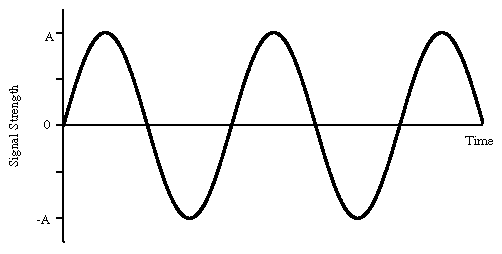
I am not an electrical engineer, and can therefore only sketch out the basic difference between Class A and Class A/B designs. Essentially (referring to the diagram above), in a Class A design, the portions of the sine wave both above the line (positive voltage) and below the line (negative voltage), referred to as the input wave cycle, are always handled by the same output device or set of devices (tube or transistor; in Pass Labs’ designs, MOSFETs). In a Class A/B, or push-pull, design, the top half of the sine wave is handled by one set of output devices, and the bottom half in handled by another set of output devices. In a Class A design, the output devices are constantly on. In a Class A/B design, as the sine wave shifts from positive to negative to positive, the alternating output devices are turned on and off. Since they are not constantly on, they require less power, and hence are more efficient. In a Class A/B design, an amplifier operates in Class A at very low power (generally less than one watt), and then shifts to Class B. The advantages of Class A are that it is simpler to implement, has generally lower distortion, and the distortion is lower order. The disadvantages are that it requires a high, continuous bias current, and is therefore less efficient, runs hotter, and is power limited. The advantages of Class A/B address the disadvantages of Class A, but do so at a cost. As one output device hands off to another at the zero crossing point, cross-over distortion becomes an issue. Cross-over distortion is usually mitigated with the use of negative feedback, which can cause issues of its own. Consequently, it is a more complex topology. Pass Labs bridges the gap between Class A and Class A/B by providing a moderately large amount of current to both devices in its Class A/B configurations, increasing the Class A operating region and insuring a smooth crossover transition. Properly implemented, both Class A and Class A/B designs can sound superb; there are simply different advantages and disadvantages. Set forth below is a chart which shows the performance of Pass Labs’ range of both Class A and Class A/B amplifiers (at 8 ohms) showing when they leave Class A operation.
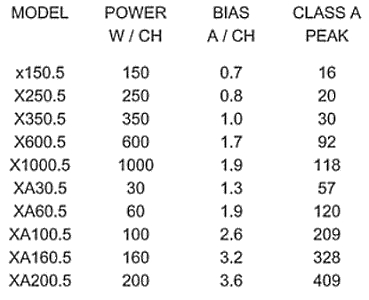
So how, you ask, are we to compare one design to another? Pass Labs provides the answer. Its INT-30A and INT-150, each priced at $7,150, are identical amplifiers. The distinction is simply a difference in bias current and rail voltage. The INT-30 is biased much more heavily into Class A. It provides 30 watts/channel into 8 ohms in Class A. What happens if the power requirement exceeds 30 watts/channel? Above a 60 watt peak the output stage operates Class B, drawing more current and providing as much as 200 watts peak into 8 ohms. On the other hand, the INT-150 provides only 8 watts/channel in Class A, before shifting to Class B operation to provide the full specified 150 watts/channel. In essence, both are Class A/B designs. The INT30A simply stays in Class A longer and is unable to provide the same maximum power as the INT-150. So which to choose? That is determined by how sensitive your speakers are, how big your listening room is, and how loud you like to listen to music. Oh, do they sound different? That is what I wanted to find out.
Pass Labs sent me both the INT-30A and the INT-150 integrated amplifiers to compare. I had them in my system for several months, driving both my 87db sensitive, nominal 4 ohm Magnepan 1.7 magnetic-planars, as well as the 90db sensitive, nominal 4 ohm Sony SS-NA2ES dynamic loudspeakers. I wondered if the INT-30A, providing 60 Class A watts/channel into both the Magnepan 1.7s and Sony SS-NA2ESes, would be sufficient in my 12’x14’x8’ listening room. I shouldn’t have been concerned. I could play music as loud as I wanted without any apparent compression or clipping. Of course, I primarily listen to classical, opera, and acoustic jazz, folk and bluegrass, so I wasn’t blasting my system continuously at deafening levels. Your mileage may vary depending on your musical tastes. So for me, the choice came down to how they sounded – admittedly a preference on my part.
As I mentioned, the INT-30A and INT-150 are the same amplifier, so describing one describes the other. In essence, the INT-30A and the INT-150 are the XA30.5 and X150.5 power amplifiers, with a preamplifier section (designed by design engineer Wayne Colburn) for switching inputs, and with volume controlled by a self-biased Class A unity gain JFET buffer with no negative feedback. Both amplifiers are fully balanced throughout. The INT-30A and INT-150 are solidly constructed, if a bit utilitarian looking. I happen to like their no nonsense aesthetics. The case and large, finned heat sinks on either side, arrayed horizontally and angling upward so the amplifiers are easy to pick up, are bent metal, and the faceplate is a thick, anodized aluminum. They weigh in at a hefty 60 pounds. Since the INT-30A runs hot to the touch, you will need to allow plenty of space around it in your rack for ventilation. Although the INT-150 runs cooler, adequate ventilation should be provided for it as well.
In lieu of the big, blue meter on the XA30.5 and X150.5 power amplifiers, the integrated versions have a small display indicating the input and volume for each channel. Speaking of inputs, there are four, two of which can be used for either balanced on XLR or unbalanced on RCA. The other two are unbalanced only. The front panel thus has six buttons, four to select input, one for power (standby) and one for mute, as well as a large, 63-step, opto-coupled volume control. Missing is a headphone jack often found on integrated amplifiers. All front panel controls can be accessed though a nice, well-balanced, brushed aluminum remote. The remote also allows you to adjust balance. The rear of the INT-30A and INT-150 are cleanly laid out. In addition to the inputs, there are both balanced and unbalanced preamplifier outputs, two pairs of speaker binding posts which accept spades but not banana plugs, an IEC power inlet, power switch, and fuse holder. There is also a separate signal ground post, connected to earth through a power thermistor, which provides isolation from system ground loops. The preamplifier outputs come in handy for driving one or more subwoofers. In addition, you could purchase an extra XA30.5 or X150.5 power amplifier and bi-wire your speakers, or simply use the preamplifier section of the INT30A or INT150 to drive a more powerful amplifier in an upgrade move. This versatility comes from a well thought-out design.
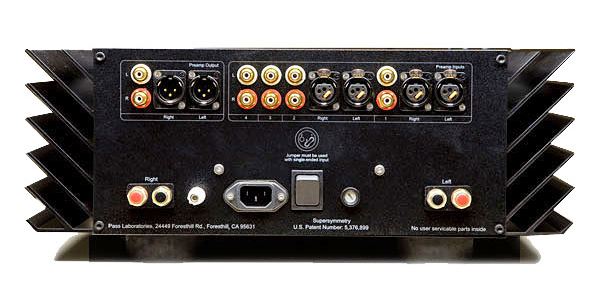
The sample INT-30A and INT-150 were brand new when I got them. I ran each of them for several weeks to make sure they were properly broken in before I did any serious listening. For the listening sessions described below, I listened to the selection first with the INT-30A, and then the INT-150. Although I listened to many records using my analog front end, the described listening sessions were selected from my digital collection played back on my Mac Mini and dCS Debussy DAC at various bit depths and sampling rates. Interconnects were the Kimber Select KS1116 and speaker cables were the Kimber Select KS6063.
One of the few sources of DSD downloads currently available is Cookie Marinco’s Blue Coast Records. She was kind enough to send me her Collection 1, a sampler of twelve selections from her small stable of talented artists. In the studio, Cookie records to 2″ analog tape, processes in the analog domain, and converts to single-rate DSD for distribution. Location recording is direct to DSD. The first cut, Looking for a Home, features singer-songwriter duo Keith Greeninger and Dayan Kai, accompanying themselves on six-string acoustic guitar and dobro. The guitar tone and timbre are faultless. It sounds so natural and present in the room that it could easily be mistaken for live. Likewise, the dobro (or is it a slide resonator guitar?) is completely believable. It’s rich and distinctive blend of harmonics arising out of the resonances from the slide, steel strings, wood body, and metal resonator are complex and beautiful, and demarcated rather than amorphized. Sharp, thumb-picked transients are startling, and have a natural ringing intrinsic to their formation. What is really knockout, though, are the vocal harmonics. Keith Greeninger’s voice is center stage and moderately deep. Dayan Kai’s subtle harmonies emerge from the right in nearly the same plane, and the physical separation of their voices is distinct, yet they blend convincingly. It’s great to find new music, and I am looking forward to the imminent release of Keith Greeninger’s new full length album.
Another selection, The Dog’s Song, offers the guitar and vocal talents of Garett Brennan. It is immediately apparent that he plays a different and much larger guitar, likely a D rather than an OOO size. Being able to hear these differentiations is one of the pleasures of a high performance audio system. You are unlikely to be able to do so with compressed files and earbuds, whatever benefits might accrue to portability and convenience. The guitar is also finger-picked rather than played with a plectrum, which gives it a softer and more generous sound. The vocals differ significantly as well. Brennan is soft-spoken and sings close to the microphone, lending a chesty, breathy presentation to the performance. The speakers disappear and Brennan is before you onstage, without the soundstage being exaggerated. With no bass accompaniment, the emphasis is on the midrange, with high frequencies limited to harmonics, plucked transients, and ambiance cues. The midrange is supple and saturated without being syrupy. You would not confuse this amplifier, however, as being tubed, as it exhibits none of that typical overly lush sonic signature.
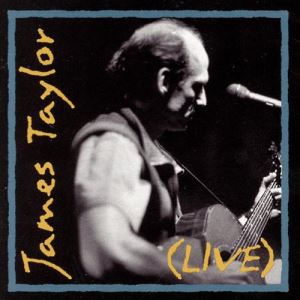
I really enjoy live albums. If you want to have a “you are there” experience, nothing facilitates it like the sound of the audience and the performance space. It has to be well recorded though, as otherwise excess reverb can sound contrived and applause can sound like so much white noise. One of the best live albums in my collection is the cleverly titled two-disk set James Taylor Live, combining the best performances from a fourteen stop tour in the early 1990s. You know you are in for something special when the engineering credits include George Massenburg and Doug Sax. Though a compilation, the acoustics are of whole cloth, as if recorded in a single venue. The soundstage is expansive, extending from side to side beyond the speakers, and from back to front to the rear wall and then some. James Taylor’s vocals, which are recorded with perhaps a shade too much emphasis in the presence region (undoubtedly resulting from microphone selection), appear above the speakers, which I have always found to be quite the trick. But that only enhances the realism, as if you are looking up to the performers on stage. Acoustic numbers, like the classic Sweet Baby James, Secret O’Life, and New Hymn are restrained and intimate, with emphasis on tone and intonation. Contrasted to those are the wildly dynamic, multi-instrumental numbers like Your Smiling Face, Steamroller Blues and Traffic Jam, where the drums and bass smack you upside the head. I could hear no untoward effects from the explosion of sound, even with the volume bordering on the uncomfortable, as it is at all live concerts. I would be remiss if I didn’t also say something about the vocal harmonies, and the way they were portrayed, as well. James Taylor has several backup vocalists, each with a distinctive voice. Each is located at a different, well defined space within the soundfield, adding a rich harmonic palette which results in a three dimensional auditory experience. It is really quite compelling. I lay this illusion squarely at the feet of the amplifiers themselves. As a system auditioning tool, this recording is unparalleled; as musical performances it is even better.
Recently, I had the pleasure of hearing Michael Tilson Thomas conduct the San Francisco Symphony Orchestra and Choir in a performance of Beethoven’s magnificent Missa Solemnis. Though it is not possible to completely recreate its grandeur in a small listening room, nevertheless, I was able to achieve much of the emotional impact with a Harmonia Mundi recording featuring Philippe Herreweghe conducting the La Chapelle Royale Collegium Vocale Orchestre des Champs Elysees. The opening Kyrie consists of just three phrases - Kyrie elesion, Christe elesion, Kyrie elesion - yet is celebrated in over eleven minutes of wondrous music, consisting of a complex and lovely weaving of orchestra and choir, punctuated by soprano, alto, tenor and bass. The quartet of soloists is arrayed across the front, with the orchestra behind and the choir above and to the rear. The soprano and tenor, building to crescendos, simply soar, while the alto and bass provide contra-harmonies in support, testing the full range of upper bass, lower and upper midrange, and high frequencies, which are portrayed as a seamless and liquid holographic whole, with both density and air, sculpting and separating the different voices. The tone, which is both burnished and clear, is simply beautiful, and leaves nothing wanting. The orchestra pulses throughout, with individual instruments from time to time distinctly coming to the fore. The woodwinds are particularly well produced, and the tympani are weighty but articulate. I especially appreciated that the massed strings did not come off as steely, as is often the case with solid-state amplifiers. Instead, they were silky. The choir, which wraps around the front of listening room, adds additional gravitas. The Pass Labs integrateds are easily up to the task of recreating a huge and complex soundfield, drawing you into the music rather than simply painting a tableau, thus revealing themselves as exceptional.
Comparison
The differences in sound between the INT-30A and the INT-150 were subtle, so much so that at first I wondered if they were merely ephemeral. As I gained more experience, however, certain patterns began to clearly emerge. Nevertheless, I want to emphasize that these were not dramatic, night and day differences, but subtle, nuanced ones. Subltey and nuance, however, are important in sound reproduction, particularly as the resolution of your system increases. And they can be heard by anyone taking the time to listen carefully.
First of all, the INT-30A has an ever so slightly warmer presentation, just left of the yin-yang median, while the INT-150 leans to the right. This does not, as you might think, mean that the INT-150 is more detailed than the INT-30A. Detail arises from resolution, of which both possess an astonishing amount. Rather, it is a difference in timbre. Visually, the difference is akin to that between focus and tint. This, I think, gives the edge to the INT-30A when string tone and vocals are of prime importance. So if, like me, you listen primarily to small scale classical music and art song, you might, all other things being equal, give the nod to the INT-30A. However, both excel at transparency. At louder levels, however, there is no doubt that the INT-150 is more dynamic and exercises a tighter grip on the lower frequencies. Thus, if you favor large scale orchestral works, fusion jazz and rock, you are likely, all other things being equal, to be happier with the INT-150. A third area of difference is in soundstage image, where I think the INT-30A offered more depth, and finer layer gradations, again favoring small scale works where the physical separation of instruments and vocals are prized. That is less important in large scale works and modern multi-tracked performances, where you are presented with a wall of sound. Soundstage width was, to my perception, equivalent. Finally, there was a difference in, for lack of a better word, continuousness of tone. The INT-30A provided a remarkable smoothness of tone, whereas, at higher levels, the INT-150 was somewhat more granular, perhaps analogous to the difference between a single driver and multi-driver loudspeaker. Now, there are fantastic multi-driver loudspeakers, so the difference is just that- a difference - and not a knock on the INT-150. For goodness sake, these are both state-of-the-art amplifiers.
Conclusion
The Pass Labs INT-30A and INT-150 are both stellar integrated amplifiers in their own right, and will give you years of listening pleasure. The preamplifier section is transparent and sufficiently versatile for all but the most complex systems, with four inputs and the ability to handle both balanced and unbalanced sources. The balanced and unbalanced outputs provide additional flexibility, and ways to upgrade your system while retaining the value of your original investment. You have a choice - offered by no other manufacturer - between lower power Class A operation and higher power Class A/B operation to meet the variables of your loudspeaker sensitivity, room dimensions, musical predilections, and importantly, sound preferences. Audiophiles with smaller rooms should not hesitate to purchase the Class A INT-30A. If it were rated as a Class A/B amplifier, it would provide at least 80 watts/channel into 8 ohms, doubling into 4 ohms, with the first third of that in seductive Class A. The INT-150 is likely to provide all the power you would need in larger rooms at higher listening levels, while preserving low frequency nimbleness, an organic midrange, soundstage dimensionality, and high frequency clarity and openness. It’s really up to you - choose whichever best fits your needs and preferences, and be assured that, either way, it really doesn’t get any better than this at anywhere near the price. Just sit back and enjoy the music. Pass Labs has got you covered. Enthusiastically recommended whichever you find ’tis nobler to enjoy in your listening room.
- Frank Berryman
Contact
Pass Laboratories
24449 Foresthill Road
Foresthill, CA 95631 USA
Telephone: (530) 367-3690
Fax: (530) 3672193
www.passlabs.com
us_sales@passlabs.com
Associated Equipment
Analog Source: VPI Scout; Dynavector 20X2; Musical Surroundings Phonomena II
Digital Sources: Meridian G08; Mac Mini; dCS Debussy; Audirvana Plus
Preamplifier: Meridian G02
Power Amplifier: Meridian 557
Loudspeakers: Magnepan 1.7; Sony SS-NA2ES
Analog Cables: Kimber Select KS1016 and KS1116
Digital Cables: Kimber Select KS2020 and KS2416 USB
Speaker Cables: Kimber Select KS6063 and KS9033
Power Cables: Kimber PK10G and PK14G
Headphones: Etymotic ER-4S
Accessories: Audience aR2p power conditioner











































